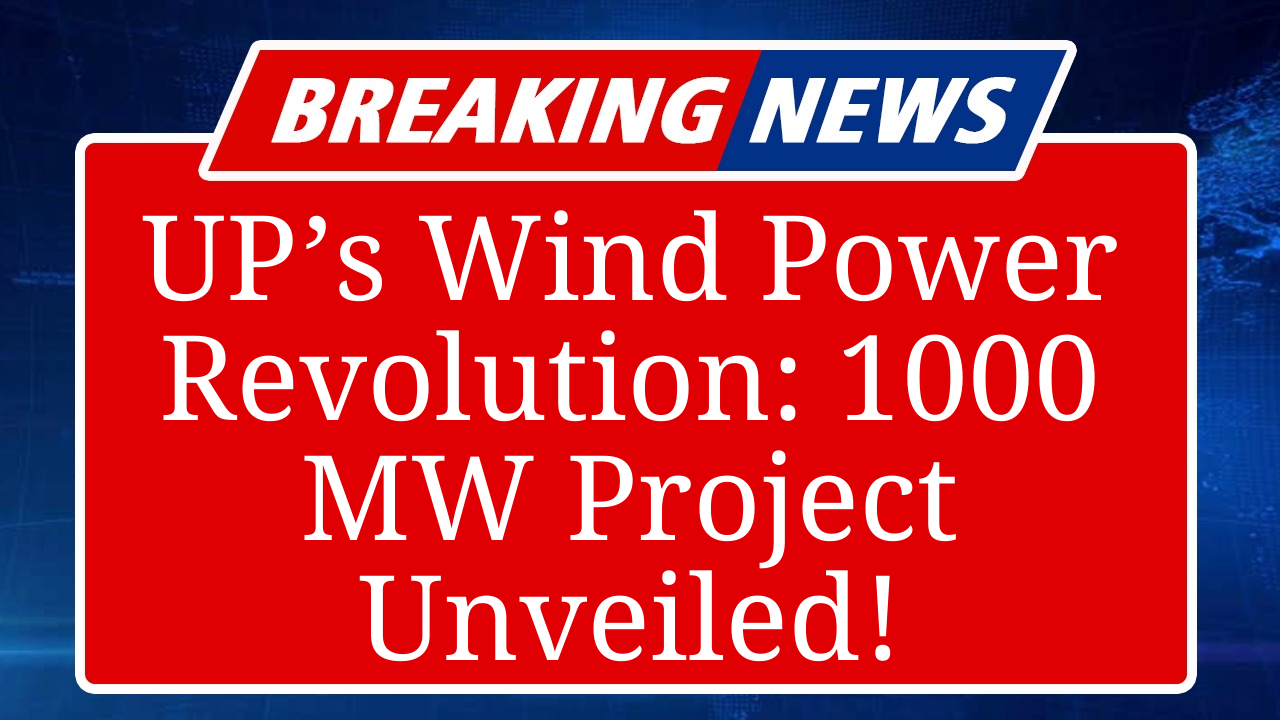Uttar Pradesh is advancing its renewable energy goals with new wind farms, including a 1000 MW project by Onix Group in Baghpat. These initiatives aim to reduce reliance on fossil fuels, create jobs, and support the state’s target of 22,000 MW renewable capacity by 2026-27. Challenges like land availability and grid inefficiencies persist, but innovative solutions are driving progress.
UP Accelerates Wind Energy Development
Uttar Pradesh, traditionally reliant on thermal power, is making significant strides in renewable energy with a focus on wind power projects. The state government, through the Uttar Pradesh New and Renewable Energy Development Agency (UPNEDA), is actively promoting wind energy to diversify its energy mix and meet rising electricity demands sustainably. As of July 2024, Uttar Pradesh’s total installed renewable energy capacity, including wind, solar, and hydro, stands at approximately 3,105.59 MW, with ambitious plans to scale up significantly by 2026-27.
A major development is the Memorandum of Understanding (MoU) signed by Onix Structures Private Limited with the Uttar Pradesh government during the Uttar Pradesh Investors Summit 2023. The agreement includes the development of a 1000 MW wind power generation plant in Baghpat, alongside a 1000 MW solar project in Prayagraj, with a combined investment of Rs. 12,000 crore. This wind project is expected to create over 1,500 jobs and contribute significantly to the state’s renewable energy targets. Onix Group’s chairman, Divyesh Savaliya, emphasized the company’s commitment to sustainable energy solutions, aligning with the state’s vision for a greener future.
Additionally, Suzlon Energy secured a contract in 2023 to develop a 300 MW wind power project for Apraava Energy, with the electricity generated supporting the Uttar Pradesh Power Corporation Limited (UPPCL). This project involves installing 100 wind turbine generators with Hybrid Lattice Tubular towers, each with a 3 MW capacity, at a site in Karnataka. The power will be transmitted to Uttar Pradesh, enhancing the state’s renewable energy supply.
The Uttar Pradesh Electricity Regulatory Commission (UPERC) has also played a pivotal role in facilitating wind energy projects. In 2021, UPERC approved a power sale agreement for 380 MW of wind power between UPPCL and the Solar Energy Corporation of India (SECI). This agreement, part of SECI’s Tranche VII auction, involved developers like Betam Wind Energy, Ostro Energy, Sprng Vaayu Urja, and Adani Renewable Energy Park Gujarat. The pooled tariff was set at Rs. 2.81 per kWh, with a trading margin of Rs. 0.07 per kWh, ensuring cost-effective power procurement.
Despite its potential, Uttar Pradesh faces challenges in scaling up wind energy due to its geography, which is less conducive to wind power compared to coastal states like Gujarat and Tamil Nadu. The National Institute of Wind Energy (NIWE) has noted that western states like Gujarat and Tamil Nadu have stronger wind flows, but Uttar Pradesh is exploring innovative solutions to overcome this limitation. For instance, UPNEDA is investigating hybrid wind-solar projects to optimize land use and grid stability, following the national Solar-Wind Hybrid Policy of 2018.
The state’s renewable energy policy also supports private sector participation and offers incentives to attract investment. The Uttar Pradesh Solar Energy Policy 2022, while primarily focused on solar, complements wind energy initiatives by promoting an optimal energy mix and encouraging private developers. The policy aims for 14,000 MW of utility-scale solar and 2,000 MW of wind power by 2028, with specific targets for distributed generation and rooftop installations.
Grid inefficiencies and high tariffs remain hurdles. Uttar Pradesh’s distribution companies reported aggregate technical and commercial losses of 22.33% in 2022-23, though improvements are underway. High grid tariffs have inadvertently boosted renewable energy adoption, as commercial and industrial consumers increasingly opt for open-access renewable projects to reduce costs. For example, Amplus commissioned a 73.4 MWp open-access solar plant in Jhansi in May 2024, highlighting the growing trend of renewable energy adoption in the state.
The state is also exploring innovative approaches like floating solar photovoltaic systems to address land availability constraints, which could be extended to wind projects in the future. UPNEDA’s assessment identified over 4,128 waterbodies suitable for such projects, signaling a forward-thinking approach to renewable energy development.
Uttar Pradesh’s push for wind energy aligns with India’s broader renewable energy goals. The country has set a target of 500 GW of non-fossil fuel-based capacity by 2030, with wind power contributing 51.5 GW as of May 2024. Uttar Pradesh’s efforts, including the Baghpat wind farm and partnerships with private developers, position it as a key player in India’s renewable energy landscape, despite its geographical challenges.
Disclaimer: This article is based on information from credible sources, including UPNEDA, Mercom India, SolarQuarter, and Climate Samurai, as well as government policies and industry reports. Data reflects the latest available information as of September 2025. Readers are advised to verify details with official sources for investment or policy decisions.

